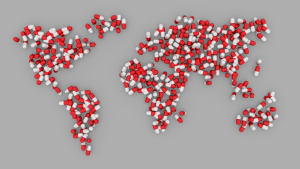6.3 Recent Changes Relating to International Drug Policy

UNGASS & Challenges to Prohibition at the International Level
The UN General Assembly Special Session on the World Drug Problem (2016) was a much anticipated and heralded opportunity for the international community to come together with civil society and engage in an open dialogue about drug policy (IDPC, 2016). Despite dissatisfaction with the outcome document reflecting the status quo (Bewley-Taylor & Jelsma, 2016; Ochoa & Nougier, 2017), and frustration with the closed nature of the meetings (i.e., the exclusion of non-governmental organizations from key deliberations, despite a General Assembly Resolution to the contrary) (Jelsma, 2019; Ochoa, 2016), UNGASS (2016) is seen as a pivotal moment in the international drug control debate (Collins, 2018; Ochoa & Nougier, 2017; IDPC, 2016) (Collins, 2018; Ochoa & Nougier, 2017). This moment ushered in “an era based on an evolving understanding of the UN drug control system” (Collins, 2018, p. 107).
Movement away from the harsh prohibitionist style international drug control, promoted over the past century by the U.S., was signalled by both the lack of consensus at UNGASS 2016 on key issues (i.e., harm reduction, decriminalization and legalization, the death penalty) and the elevation of health and human rights as essential components of drug control (Ochoa & Nougier, 2017). Statements made by UN bodies, Member States, and civil society organizations calling out the lack of attention in the outcome document to a number of important issues (e.g., decriminalization and legalization, and harm reduction) further heralded a movement away from the status quo (Ochoa, 2016). It also pointed to a recognition of the need for flexibility in international drug control, that permits national and international innovations in drug policy (Chatwin, 2015) to better reflect the needs and rights of citizens.
Changes in national policies since UNGASS (2016) further indicate some successful loosening of the strict prohibitionist policies. The legalization of cannabis in Canada in 2018, despite warnings and risks of non-compliance with international law, illustrates how nation states can successfully side-step the international treaties (Habibi & Hoffman, 2018). The UN reclassification of cannabis in 2020 is another signal of change. In response to the World Health Organization’s (WHO) recommendations, the UN Commission for Narcotic Drugs (CND) moved cannabis from Schedule IV (most dangerous drugs with no therapeutic value) to Schedule I (drugs with some safe and therapeutic value) of the Single Convention (1961) (WHO, 2020; UNDP, 2020). In addition, in reaction to the challenging of prohibitionist policies, the UN recently adjusted its stance on drug control to one that promotes human rights and health initiatives, focusing on reversing the harmful effect of prohibitionist control policies (UNDP, 2019).
Click the link below to learn more about the impact of the UNGASS (2016) outcome document as of 2021:
Taking Stock of Half a Decade of Drug Policy: An Evaluation of UNGASS Implementation (Read pages 9-11)
VIDEO: CND 101: A Guide to the United Nations Commission on Narcotic Drugs
In the following video, Marie Nougier talks about the Commission on Narcotic Drugs (CND), which is the central policy-making body of the UN drug control architecture. The video provides: some background on what the CND does and how it operates; a glimpse into the changing policies at the UN through the International Drug Policy Consortium; and how NGOs are helping to reconstruct legitimate use and prohibition.
The UN Common Position and the International Guidelines on Human Rights and Drug Policy
In 2019, the UN System Chief Executives Board for Coordination (CED), adopted the UN Common Position (2018). The Common Position is meant to provide a common basis for all UN agencies (UN, 2018), improving UN system coherence (Jelsma, 2019). It incorporates a number of elements from UNGASS (2016), as evidenced in its guiding set of shared principles, that provide support for Member States to develop “truly balanced, comprehensive, integrate, evidence-based, human rights-based, development-oriented and sustainable response to the world drug problem” (CEB, 2018, p. 12). In line with these principles, the Common Position endorses decriminalizing possession and use of drugs scheduled in the international drug conventions (HIV Legal Network, March 2021; UN, 2018).
Following the UN Common Position, in 2020 the International Guidelines on Human Rights and Drug Policy was introduced (November 2020). This policy “highlights the measures that States should undertake or refrain from undertaking in order to comply with their human rights obligations, while taking into account their concurrent obligations under the three international drug treaties” (i.e., Single Convention on Narcotic Drugs (1961); Convention on Psychotropic Substances (1971); Convention against Illicit Traffic in Narcotic Drugs and Psychotropic Substances (1988) (UNDP, 2020, para. 4). Rather than inventing new rights, these guidelines apply existing human rights law to international drug control, in order to ensure human rights protections (UNDP, 2020). The guidelines represent the latest evolution in international drug control.
Click the links below to learn more about new UN drug policy changes:
New UN Guidelines to Mainstream Human Rights in the Global Drugs Debate
Landmark International Guideline Launched on Human Rights and Drug Policy
VIDEO: Following Up the UN Common Position on Drugs – CND 2020
The following video outlines the features of the UN Common Position on Drug Policy, published in 2019.

